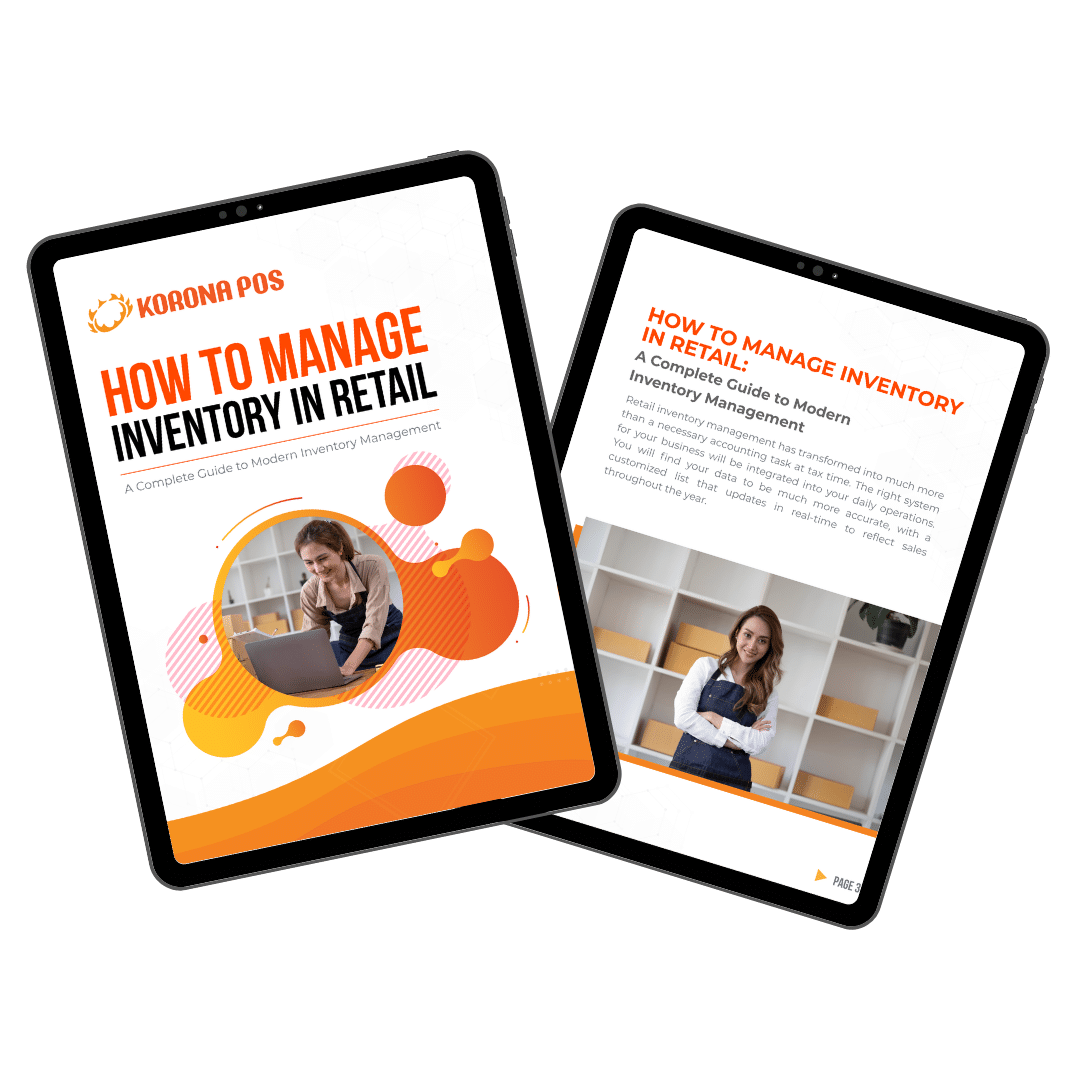Managing a retail store can feel like navigating a maze, with challenges lurking around every corner. From inventory headaches to staffing dilemmas, it’s easy to get overwhelmed.
This guide on how to manage a retail store will explain these complexities and provide actionable insights to tackle everyday obstacles. Implementing proven strategies and best practices will help managers overcome challenges and thrive in the competitive retail landscape. Read on for more.
Key Takeaways: Managing a retail store
- Retail managers are crucial to the success of any shop or store.
- Recruiting and training skilled employees who align with the store’s values and customer service standards is crucial.
- Effective store management involves Implementing systems to track stock levels and sales trends, conducting regular audits, and utilizing inventory management software.
- Store supervisors should prioritize positive shopping experiences by training staff to greet customers warmly, actively listen to their needs, and promptly address concerns.

How to Effectively Manage a Retail Store
Managing a retail store efficiently requires a delicate balance of strategic planning, operational excellence, and a customer-centric focus. Effective retail management is a multifaceted endeavor that includes optimizing inventory management, ensuring exceptional customer service, and fostering a motivated and productive team.
This section delves into the essential strategies and tactics that empower successful retail management. We explore the intricacies of merchandising, sales forecasting, and leveraging technology to streamline processes and enhance the shopping experience.
Tip #1: Staff Hiring and Training
Recruit skilled and motivated staff members who align with your store’s values and customer service standards. Provide comprehensive training to ensure employees understand their roles, product knowledge, and customer interaction protocols.
Assess performance regularly and offer ongoing training and support for continuous improvement. Point of sale time tracking and employee management will automate aspects of this.
Tip #2: Inventory Management
Implement efficient inventory management systems to track stock levels and monitor sales trends. Accuracy and precision will prevent stockouts or overstock situations.
Conduct regular inventory audits to identify discrepancies and optimize stock turnover. Utilizing point of sale inventory management software will make this process much easier.

Learn how to manage your inventory effectively with this free eGuide.
Tip #3: Customer Service Excellence
Prioritize exceptional customer service to create positive shopping experiences and foster customer loyalty. Train staff to greet customers warmly, actively listen to their needs, and provide knowledgeable assistance.
Encourage feedback and promptly address concerns or complaints to resolve issues and retain customers. Implementing a points-based loyalty program is a great way to keep customers coming back.
Tip #4: Visual Merchandising
Develop visually appealing displays and product arrangements to attract customer’s attention and drive sales. Experiment with different retail merchandising layouts, signage, and lighting techniques to showcase products effectively.
Regularly refresh displays to maintain interest and highlight new arrivals or promotions. Focus on the seasons and holidays, especially for shops like clothing and liquor stores.
Tip #5: Sales and Promotion Strategies
Implement discounts and promotional campaigns to boost sales and revenue. Offer mark-downs, specials, promotions, and bundled deals to incentivize purchases and attract customers.
Analyze sales data to identify opportunities for suggestive selling techniques like upselling, cross-selling, and targeted promotions.
Tip #6: Operational Efficiency
Streamline store operations to maximize efficiency and minimize costs. Establish clear opening and closing procedures, cash handling, and restocking protocols.
Use technology and automation to reduce manual tasks and improve productivity whenever possible. Standard operating procedures make stores safer and more profitable.
Tip #7: Store Maintenance and Cleanliness
Maintaining a clean and organized store environment creates a positive impression on customers and ensures their comfort and safety. Decluttering space is essential to designing a retail floor layout.
Implement regular cleaning schedules and conduct routine inspections to address any maintenance issues promptly.
Tip #8: Community Engagement and Marketing
Build relationships with the local community through events, sponsorships, and partnerships to increase brand awareness and customer loyalty. Participate in community activities and support local causes to demonstrate your commitment and strengthen ties with customers.
Utilize social media and other marketing channels to engage with customers and promote your store’s offerings and initiatives.
Primary Role and Responsibilities of a Retail Store Manager
The store manager’s role is crucial for orchestrating smooth operations. Managers are pivotal to the success of any retail shop, as they oversee all staff and store operations.
Here are some responsibilities managers are expected to fulfill.
Responsibility 1: Leadership
Retail managers should provide the team with direction, guidance, and motivation to ensure they meet sales targets and provide excellent customer service. Overseeing staff recruitment, training, and scheduling promotes exceptional customer experiences and achieving performance goals.
Effective leadership fosters a positive work environment, promotes teamwork, and empowers employees to excel.
Responsibility 2: Sales Performance and Financial Management
Store managers often work on the store’s budget, expenses, and profitability. For example, they analyze financial reports and implement cost-saving measures where appropriate.
Many managers are also responsible for driving sales growth and maximizing profitability. They do this through strategic planning and effective execution of sales strategies. This involves analyzing data, setting targets, and implementing initiatives to boost revenue and achieve sales goals.
Responsibility 3: Inventory Control and Merchandising
Managing inventory levels and product merchandising is crucial for maintaining a visually appealing store environment, thereby promoting more sales. Supervisors oversee inventory management systems, monitor stock levels, and coordinate replenishment orders.
Additionally, they strategize product placement, window design, and visual merchandising displays to enhance the customer shopping experience and drive sales.
Depending on their level of ownership or influence in the business, some managers will decide what types of trends to follow and products to stock.
Responsibility 4: Customer Experience and Satisfaction
Ensuring exceptional customer service is paramount to building customer loyalty and driving repeat business. Stores set service standards from the top down. That means training staff on customer interaction protocols and handling escalated customer inquiries or complaints promptly and professionally.
By fostering a customer-centric culture, you create a welcoming atmosphere that encourages positive interactions and leaves a lasting impression.
Responsibility 5: Store Operations and Compliance
A retail store manager’s essential responsibilities include managing day-to-day store operations and ensuring compliance with company policies, procedures, and regulations. This includes overseeing opening and closing procedures, cash handling, security protocols, and adherence to health and safety standards.
Maintaining operational efficiency and compliance creates a safe and organized environment for customers and employees while upholding the store’s reputation and integrity.
Responsibility 6: Problem Solving
A retail store manager must adeptly problem-solve to ensure smooth operations. Retail is a people-forward business. Each day will bring new customers, new challenges, and new experiences.
Thus, store leadership must be able to quickly and creatively solve problems as they arise. Responding to individual issues and supporting each staff member with kindness and respect will ensure success.
Retail Store Management: 7 KPI’s to Measure
Key performance indicators, or KPIs, provide measurable benchmarks to assess the store’s success. They track sales revenue, profit margins, customer satisfaction, and inventory turnover rates.
Managers monitor retail KPIs to gain insights into their performance, identify areas for improvement, and make informed strategic decisions. While there are dozens to choose from, here are 7 of the most important:
- Sales per Square Foot
Measures the revenue generated per unit area of sales space, indicating the store’s efficiency in utilizing its physical space to drive sales.

- Gross Margin
This formula calculates the percentage of revenue retained after deducting the cost of goods sold, reflecting the store’s profitability.

- Inventory Turnover
Evaluate how quickly inventory is sold and replaced within a specific period, indicating efficiency in managing stock levels and avoiding overstocking or stockouts.

- Average Transaction Value (ATV)
This determines the average amount customers spend per transaction, highlighting sales effectiveness and potential for upselling or cross-selling.

- Employee Turnover Rate
Tracks the percentage of employees leaving the organization within a given timeframe, indicating staff satisfaction and the effectiveness of retention strategies.

- Conversion Rate
Measures the percentage of store visitors who purchase, illustrating the store’s ability to convert foot traffic into sales.

- Average Wait Time
Calculates the average time customers spend waiting for service or at checkout, reflecting operational efficiency and customer service effectiveness.

Managing a Retail Store FAQs
- How do I manage my retail store?
To effectively manage your retail store, focus on critical areas such as staff leadership, sales performance, and customer satisfaction. Implement clear communication channels, set achievable goals, and provide ongoing training and support to your team. Continuously analyze sales data, optimize inventory control, and prioritize excellent customer service to ensure the success and profitability of your store.
- How can I be a good retail store manager?
To excel as a retail store manager, prioritize effective leadership by inspiring and empowering your team to perform their best. Foster a positive work environment through clear communication, support, and recognition of their efforts. Additionally, focus on optimizing sales strategies, enhancing customer experiences, and maintaining operational excellence.
- How do you run a retail store efficiently?
Running a retail store efficiently involves optimizing various aspects of operations. Implement streamlined processes for inventory management, sales tracking, and staff scheduling to minimize waste and maximize productivity. Use technology, such as point of sale systems and inventory management software, to automate tasks and improve accuracy. Finally, prioritize staff development and training to ensure employees can handle their responsibilities effectively.
- How do you operate a successful retail store?
Operating a successful retail store involves understanding your target market and offering products and services that meet their needs and preferences. Focus on delivering exceptional customer service to build loyalty and encourage repeat business while implementing effective sales and marketing strategies to attract new customers. Continuously adapting to market trends to stay ahead in a competitive landscape ensures sustained growth and profitability.
Using KORONA POS to Help Manage Your Retail Store
Help your store thrive in today’s competitive market with a powerful cloud-based point of sale. With its intuitive interface and robust features, KORONA POS simplifies tasks like inventory management and sales reporting.
From optimizing stock levels to analyzing data in real time, KORONA POS empowers you to make informed decisions to drive profitability. To learn more about how KORONA POS retail software can make managing your store much more effortless, click below!













